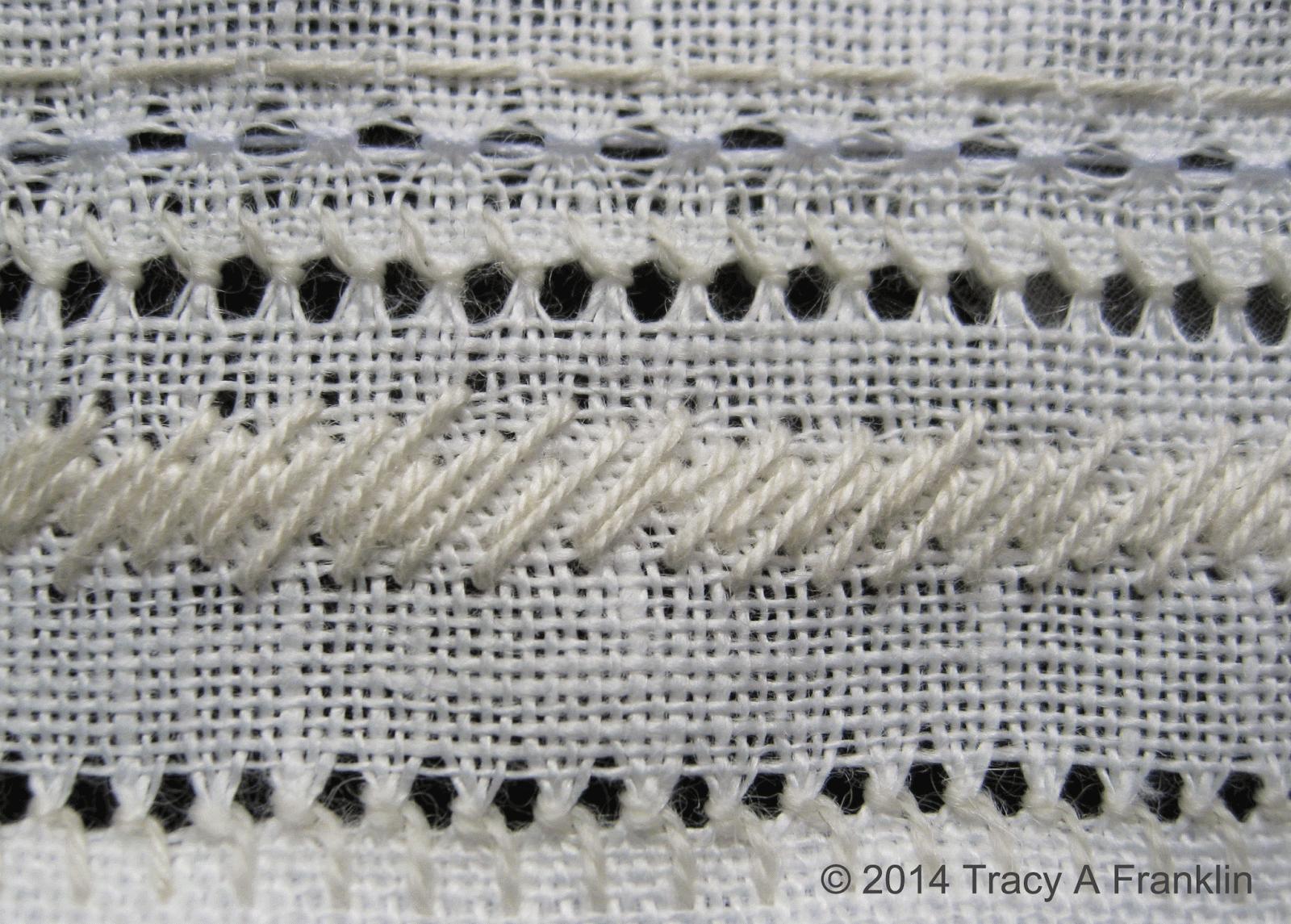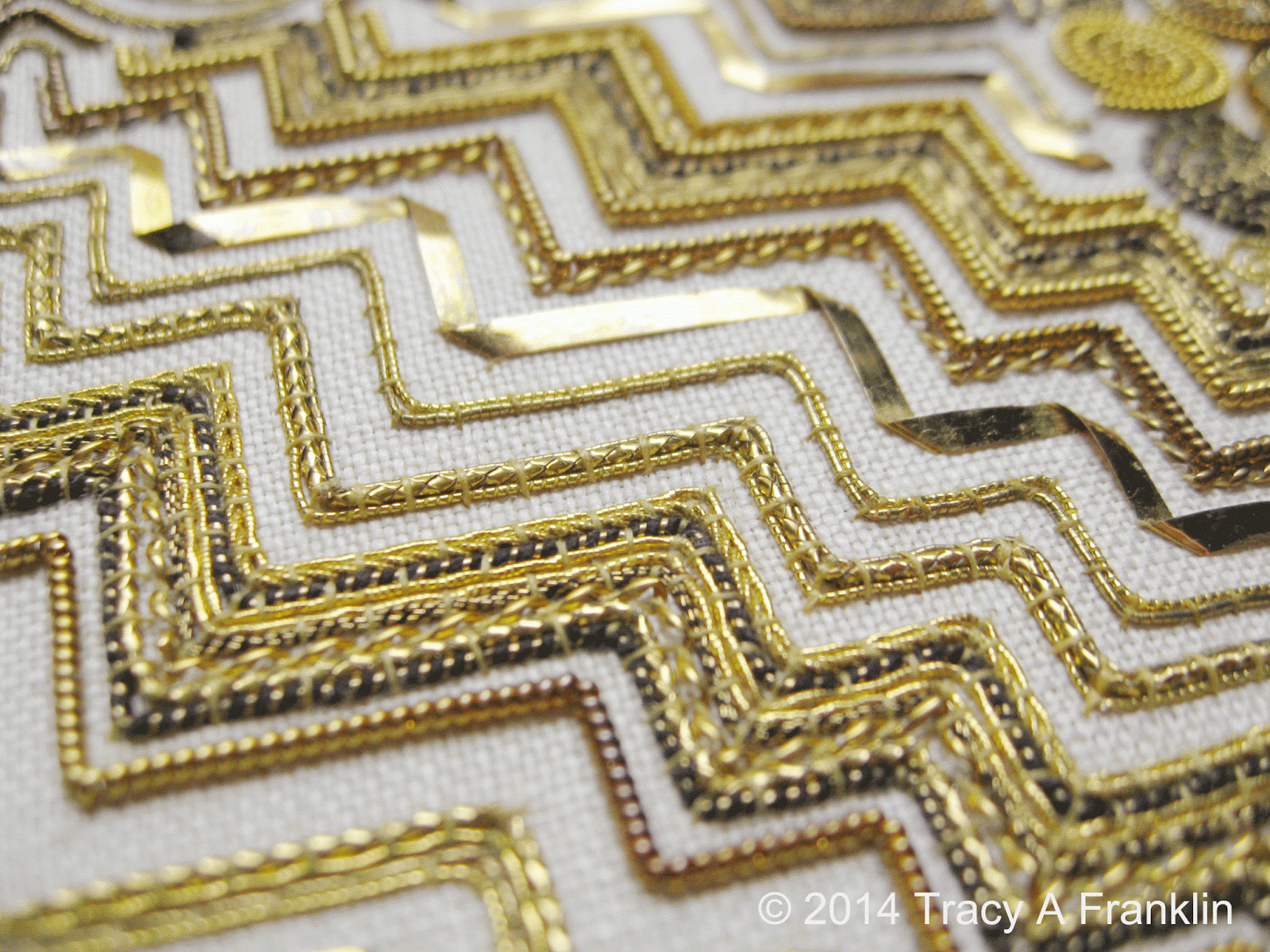I worked this piece a couple of years ago, but as yet, I have not really published any images of it, only a glimpse!
This is only part of the whole piece, based on couching and line. My aim was to experiment with couching and work with straight lines, stepped lines, curves, spirals, zig-zags, etc. I also decided to work the piece in black and gold threads, including tarnished threads, as I love the depth of colour they produced.
The threads include - Passing thread, Pearl purl intact and stretched, Rococo thread, Twist, Plate - crimped and upstanding.
Most of the plate I used was thrown in a bin by a student I was teaching on a residential workshop sometime ago which I lifted out and kept for myself. She had obviously thrown it away because it was tarnished, but I loved it!
The last two images I experimented with in Photoshop. I always slightly edit images anyway, but I thought I would experiment further and post them.
Enjoy!



















































